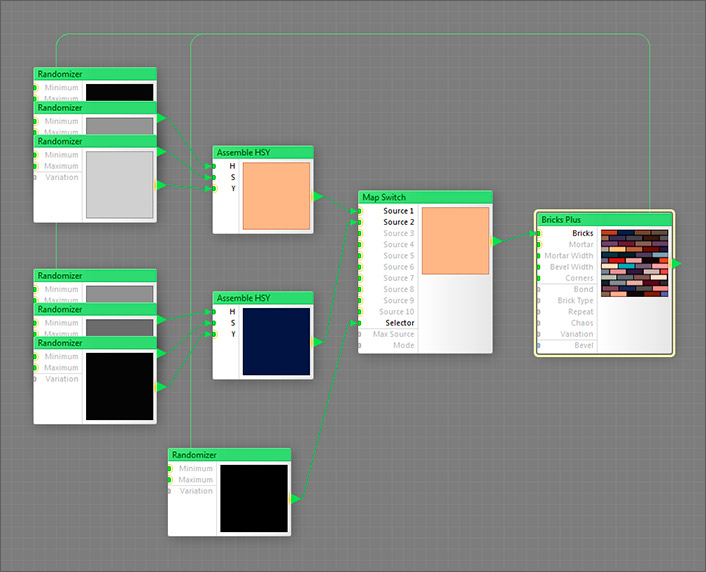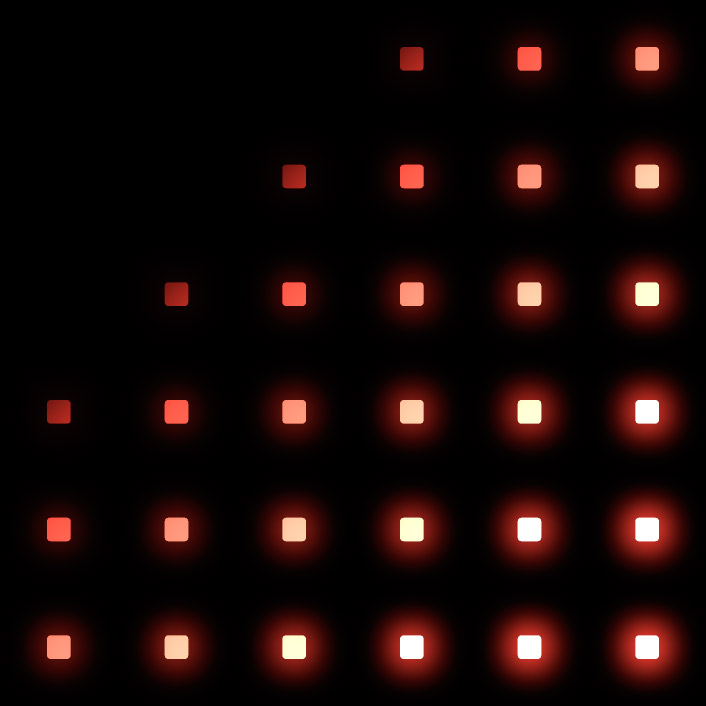Bricks, Tiles and Pavements, Filter Forge's "brick-and-mortar" components, have not changed since version 1.0. Filter Forge 5.0 finally refreshes them by adding slave components and making them support HDR colors.
Slave Components
Each of the three components, Bricks Plus, Tiles Plus, Pavements Plus, now comes with 13 slave components, which allow you to randomize or customize each individual brick or tile:

HDR Support
When we updated Filter Forge components to support HDR colors back in Filter Forge 2.0, these three components weren't updated because the HLS color model they used for randomizing colors does not support HDR. In Filter Forge 5.0, we removed the fixed HLS-based randomization logic, which enabled us to update these components to support HDR colors on both their inputs and outputs.


As for the loss of HLS-based randomization, this is not a big deal. Thanks to the new slave components, and Randomizer in particular, you can now implement any randomization logic, including those that support HDR colors, as shown in the first example.
Full List of Slave Components
- Randomizer – outputs a normalized random value (converted to color) that is unique for each element, e.g. brick or tile. You can create multiple copies of Randomizer, so if you need multiple random values to build or modify the brick / tile subtree, you can use multiple Randomizers with different Variation settings (i.e. random seeds).
- Cell Center X and Y – output the X and Y coordinates of the grid cell in which the current element resides.
- Cell Left, Top, Right and Bottom – output left, top, right and bottom coordinates of the grid cell in which the current element resides.
- Element Center X and Center Y – output the X and Y coordinates of the current element, i.e. brick or tile. The main use of these slaves is to lookup a value or color from a custom map and use it to customize the particle (see the lookup technique in the Bomber Plus article).
- Element Left, Top, Right and Bottom – output left, top, right and bottom coordinates of the current element, i.e. brick or tile.
Using Slave Components
First, make sure that the slave components are connected to the subtree of their master's Brick, Tile or Pavement input, otherwise they will have no effect. These inputs are the only inputs in these components that generates element data for slaves during sampling.
And second, make sure that there are no bitmap-based components between the slave and the slave-accepting input (see above). Bitmap-based components kill the element data sent to slaves by their master, and thus cannot be used in slave-to-master connections.